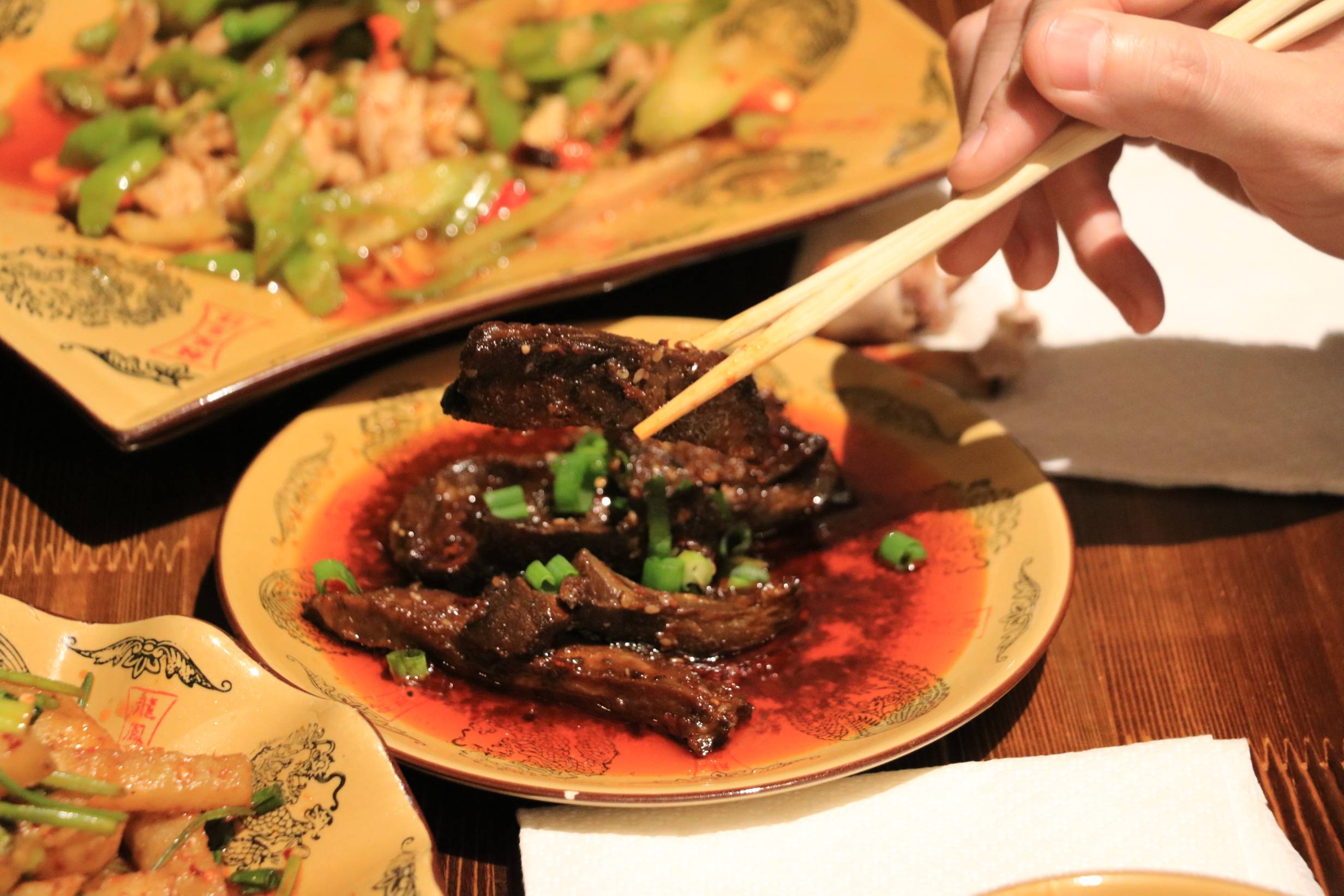With all my Chinese friends and co-workers hyping over the restaurant that opened over the summer, I was finally able to summon a group and give Shiquan a try (pronounced She-chyuan). It’s located near East Green Street and Third — a block away from the busiest business segment of Campustown — and with almost no exterior signage to inform you that it’s a restaurant, the business is buzzing.

Walking inside one discovers 8 four-person tables in the slim space, all orderly square, comfortably wooden. The interior has got quite the right feeling to it. Simple, modern, and positively homely from my time spent living in Southern China, the big windows are shaded for privacy but permit soft natural light during the day. With its limited space, it can be a challenge to be seated during peak hours, but that should be no reason to miss the food at Shiquan.

The new additions of Chinese restaurants in Campustown in the past 2-3 years had presented quite the competition for business owners, with each going after the most “authentic” cuisines to cater to the international Chinese students and scholars, who are often fiercely honest critics on top of being some of the most passionate eaters in the world. The selection that night ended up covering a good geographic range; in true Chinese spirit, my party of five diligently shared everything on the table, devouring what seemed like too much food for us to the last piece of pepper.
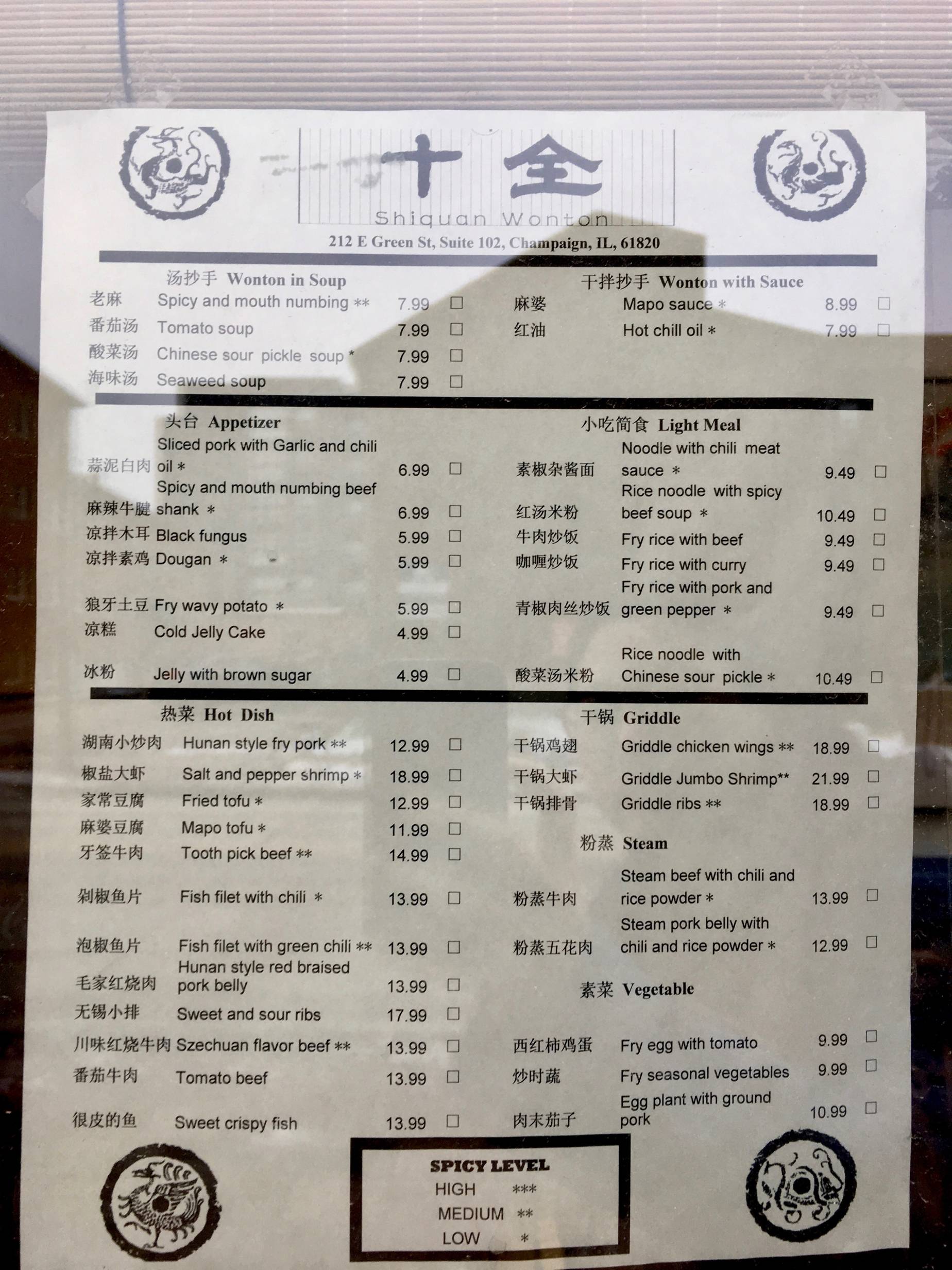
Ordering at Shiquan is a tiny adventure, especially if you don’t read Chinese characters. The menu is presented on a notepad, through what seemed like an app, with English and Chinese language options interchangeable through the little icon on the top right corner. While it’s nice to have many pictures to guide you through, many pictures are absent, and the translations are vague. It is near impossible to translate the name of any dish that had morphed through decades of colloquialism, as a Mandarin speaker I suggest asking the waiter (yes he is the only waiter most of the time) about the dishes you’re considering, and maybe consult the rest of this article as a guide.
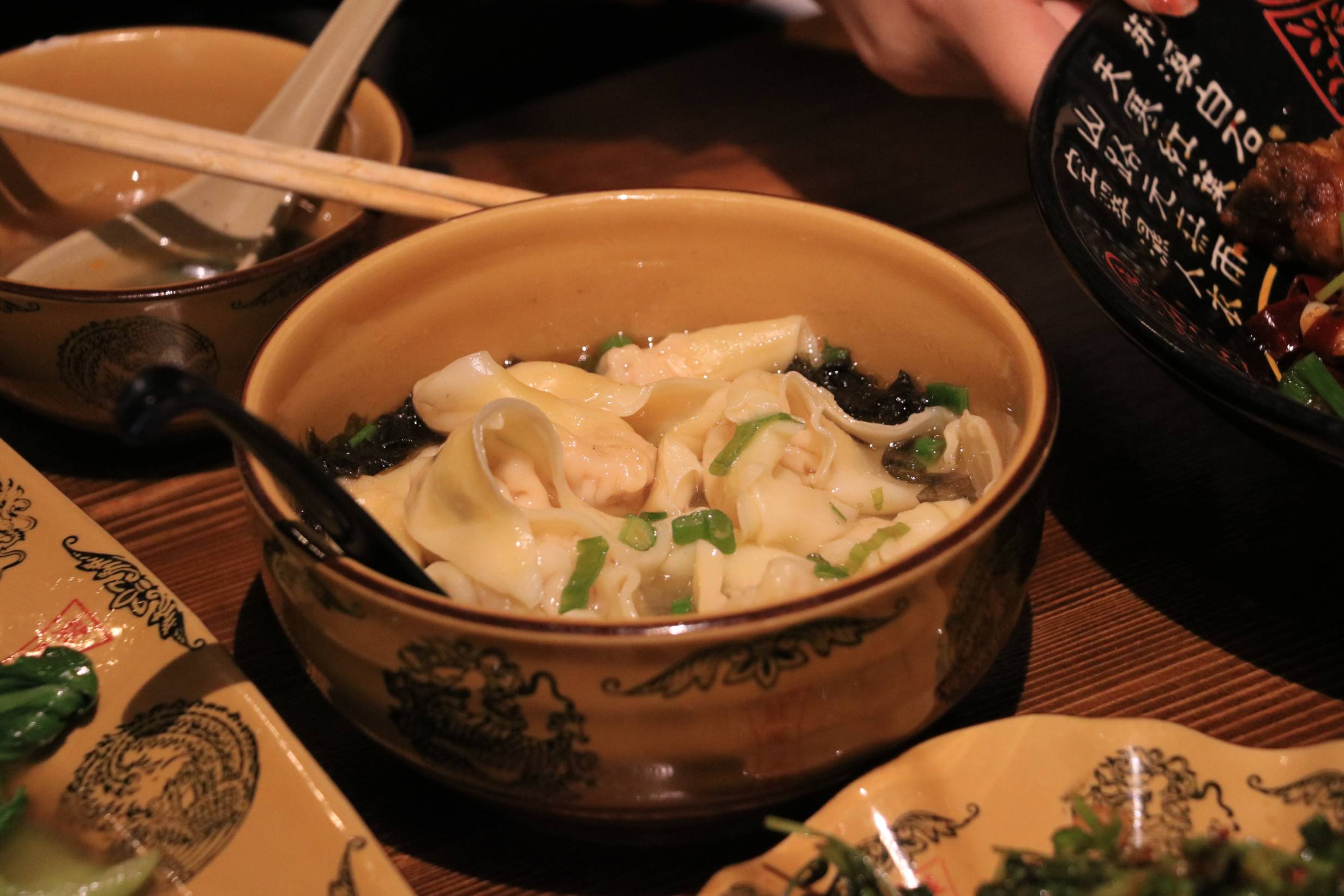
To start the meal, we ordered seaweed wontons ($7.99). The wontons themselves are thin wrappers around smooth, juicy pork filling, sitting in a clear broth with dried shrimp and laver (a type of seaweed). It was a good place to start the meal, and probably could make a comforting lunch, but I wanted something more. The next week I returned at lunch hour and ordered the “spicy and mouth numbing wontons” (also $7.99, a clear attempt in translating the term Mala, although Sichuan cuisine goes way beyond), which turned out to have piping hot broth generously laced with the numbing Sichuan peppercorns, the heat sealed in with a layer of chili oil on top. If you’re into, or just getting into Sichuanese cuisine, this is for you. Just be careful to not burn yourself, and don’t bother drinking the broth – its heat and aromatics are only there to accompany the wontons; for me it was too salty on its own.
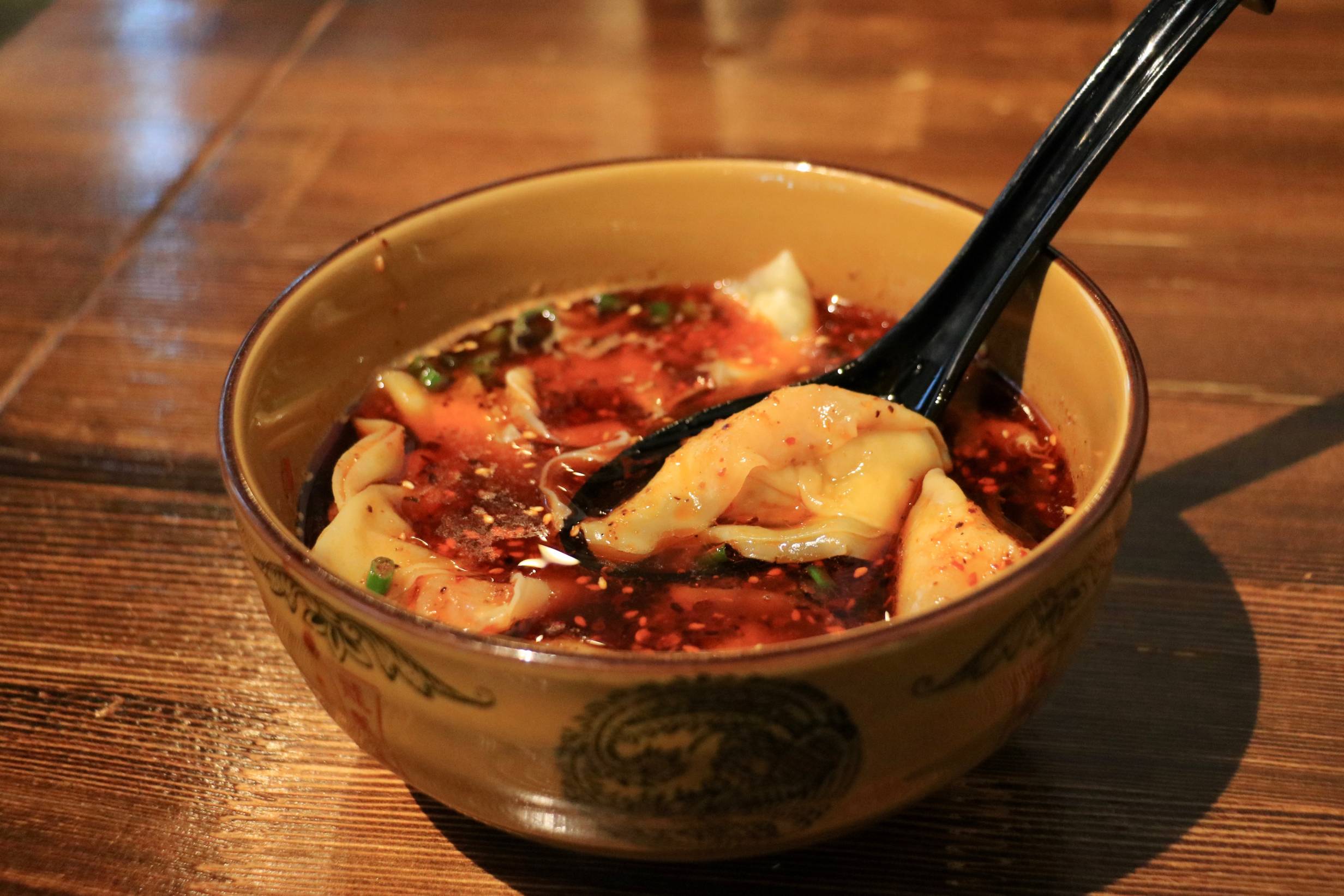
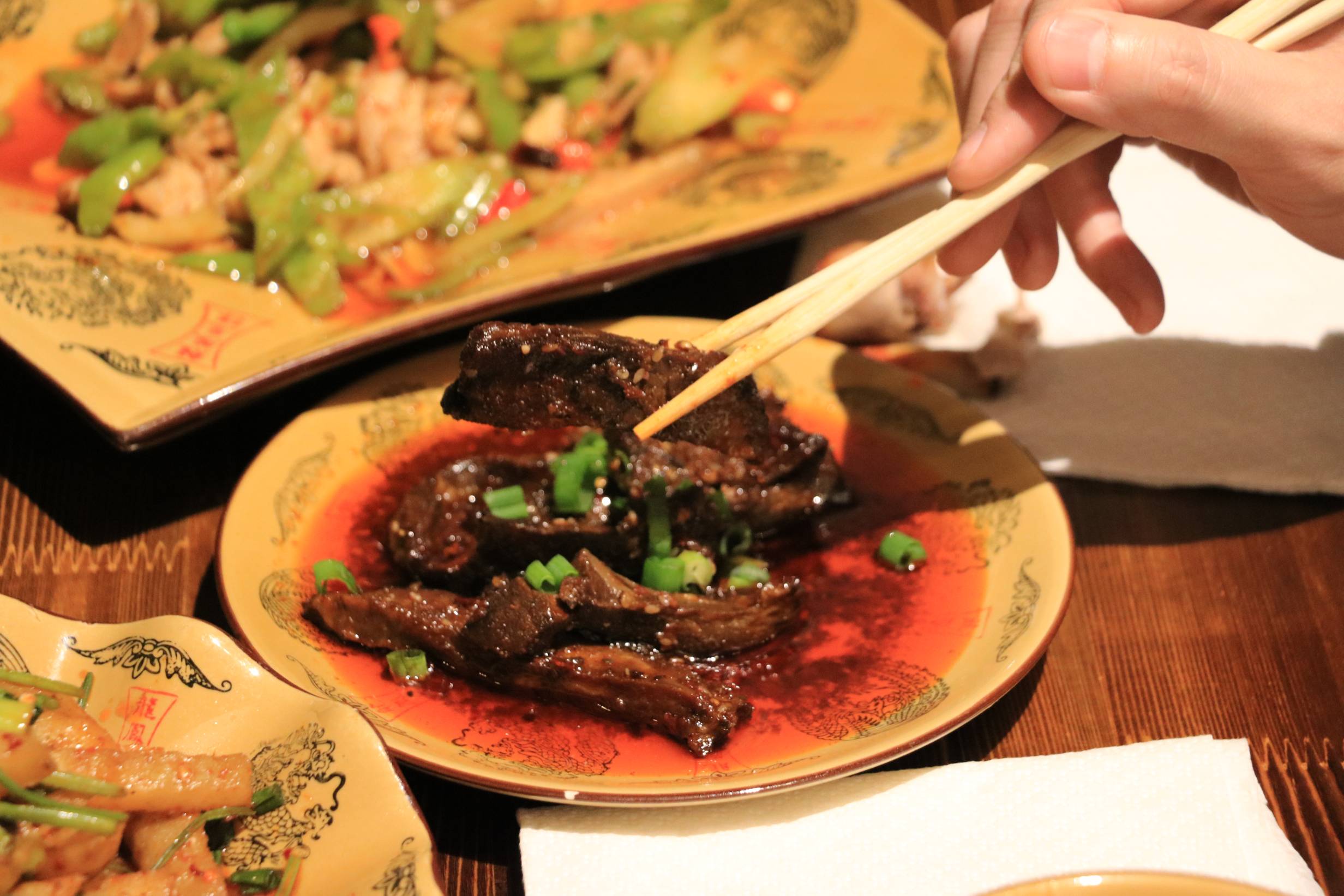
Another starter we shared was beef shank cold-cut in chili oil (or “spicy and mouth numbing beef shank,” $6.99). I often braise beef shank for cold-cuts myself, but never thought of drenching them in the oily bath. The flavor of the chili oil was nutty, floral, and complex, serving as a great agent for the chewy-tender beef shank braised with spices and soy sauce, chilled and sliced. It was good, but almost overshadowed by the upcoming dishes.
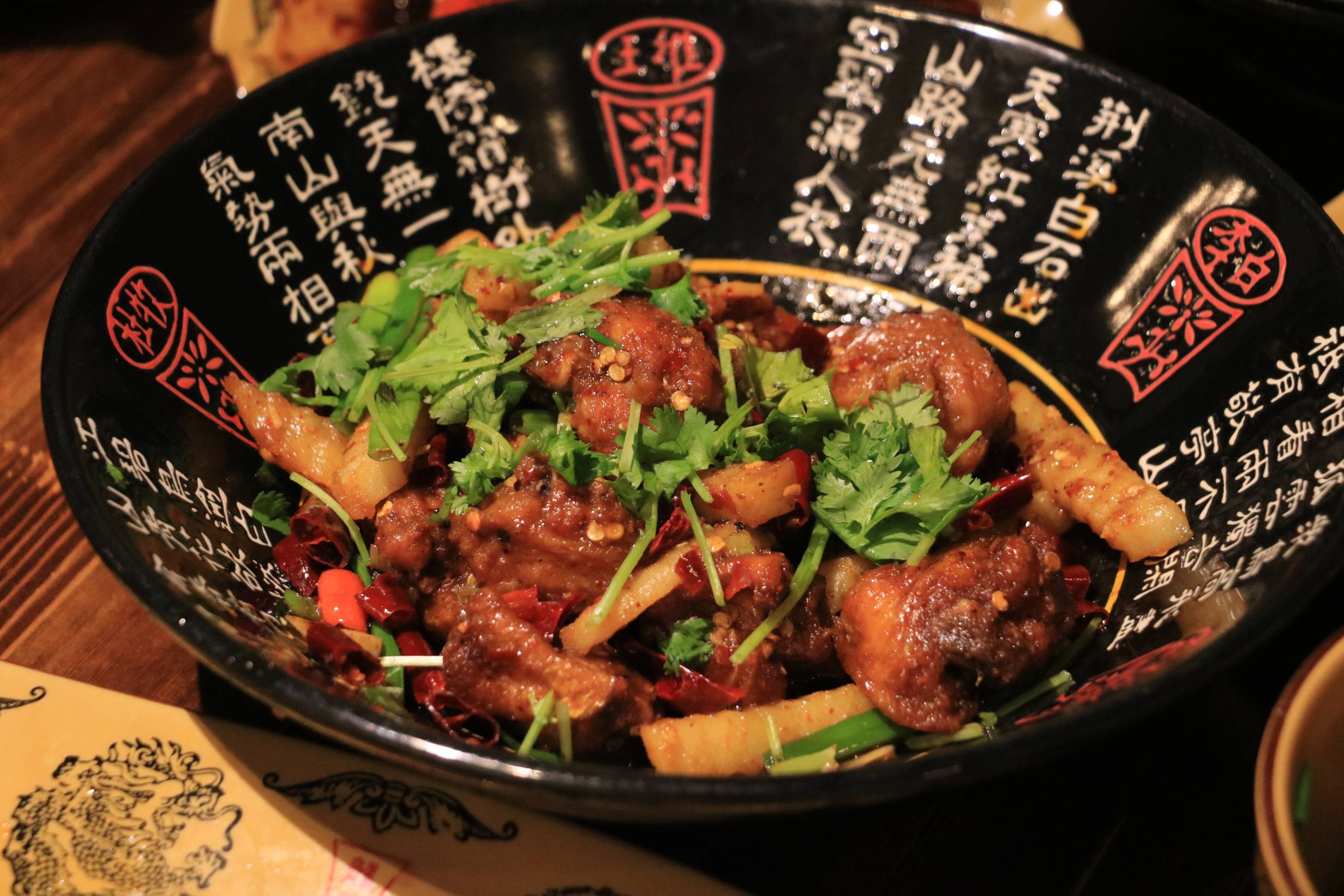
Per our waiter’s recommendation, we ordered the fried chicken wings with potatoes ($18.99, “griddle chicken wings“ in English, where most likely no griddle was harmed in the making of the dish). Overall I was delighted to see the ridiculous amount of chunky spices in a dish that are not to be eaten, an imagery that really aligned with my growing-up memories dining in restaurants in China, one that hasn’t been very common with Chinese restaurants here in C-U (spices are more expensive here and used more sparingly). It seemed like the chicken wings were cleavered into larger-than-bite-size pieces, bone-in, fried and then stir-fried with aromatic dried chilis and crinkle-cut potato sticks. The flavor of the wings was stunning: altogether hot, nutty, with a touch of numbing sensation from Sichuan peppercorns, though they were also oily and came with much struggle to eat around the bones. The potato sticks otherwise were bland in the center, somewhat confusing from the intense flavors of everything else. I was happy that I tried it once, but will explore other items on the promising menu in the future.
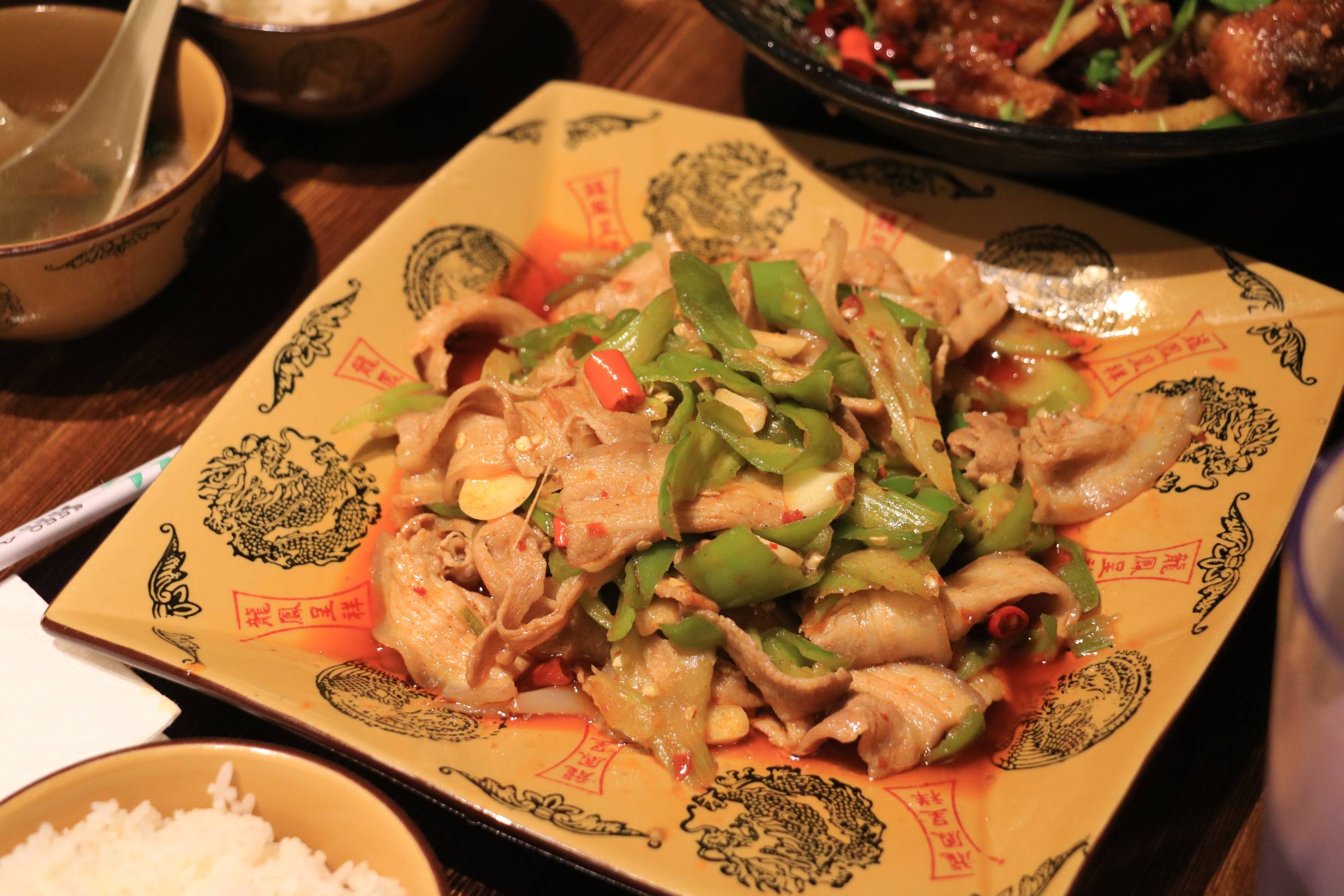
Only later did I learn that the Chef at Shiquan came from Hunan, where in my opinion, come folks with the highest tolerance for capsaicin-induced pain. While the peppery heat is toned down in every Indian, Chinese, Korean, etc. restaurant in the U.S., chefs are now gently pushing up the limit. The iconically Hunanese stir-fried pork with hot green peppers (“Hunan style fry pork,” $12.99) packed quite a bit of heat, using thin-skinned Chinese green peppers and red hot chilis to accompany the fattiness of thinly sliced skin-on pork belly, also known as bacon (fresh unsalted). The omnipresent garlic cloves are left in large chunks here, the sidekick to a deliberately savory, simple dish, making us hit the rice bowl.
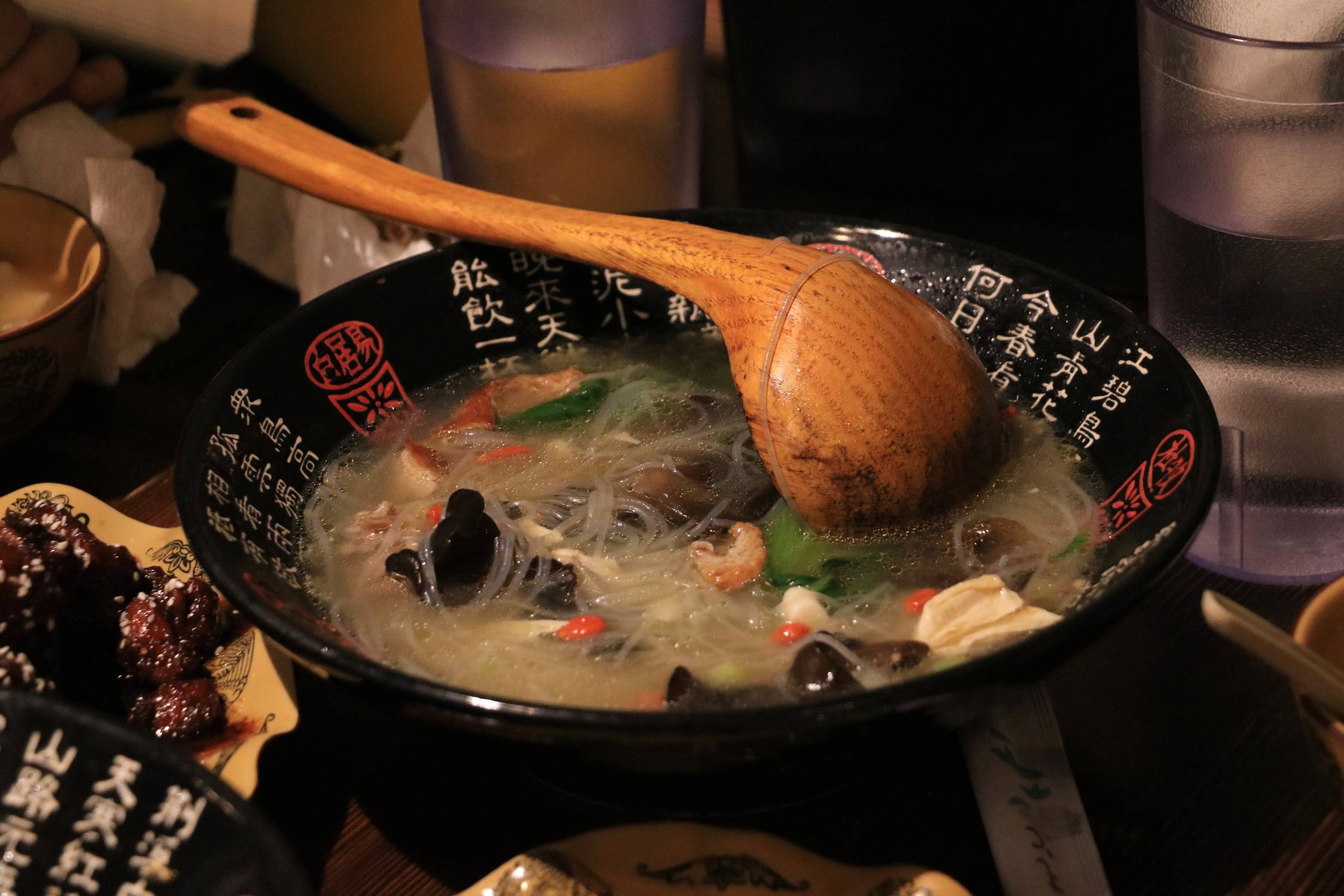
To our surprise, Shiquan also offered delicate fares from China’s water-bound Jiangnan region, namingly Suchou cuisine. It was bit of a backward introduction: Since I arrived late to dinner, a soup had already been ordered for the hungry people. Unaware of what soup it was, I ladled some into my bowl and took a sip, and it had won me over from that instant. It tasted like something that my Northerner family would never be able to produce, yet something I sought comfort in from the eateries and breakfast stalls when studying in Southern China. Not heavy with fiery spices like the other dishes, it tasted of herbs and the aroma of goji berries: like health but in a really, really good way. The soup was a wholesome bowl of roasted duck, rice vermicelli, tofu skin, wood ear mushroom, and baby bok choi. I’m usually skeptical about a restaurant’s breaching of cuisines, but what the chef did at Shiquan was truly remarkable.
Needless to say that, when a friend came to visit in the first proper snowy evening of the season, I took her there and without looking at the menu, ordered the duck soup ($14.99), feeling good about ourselves.
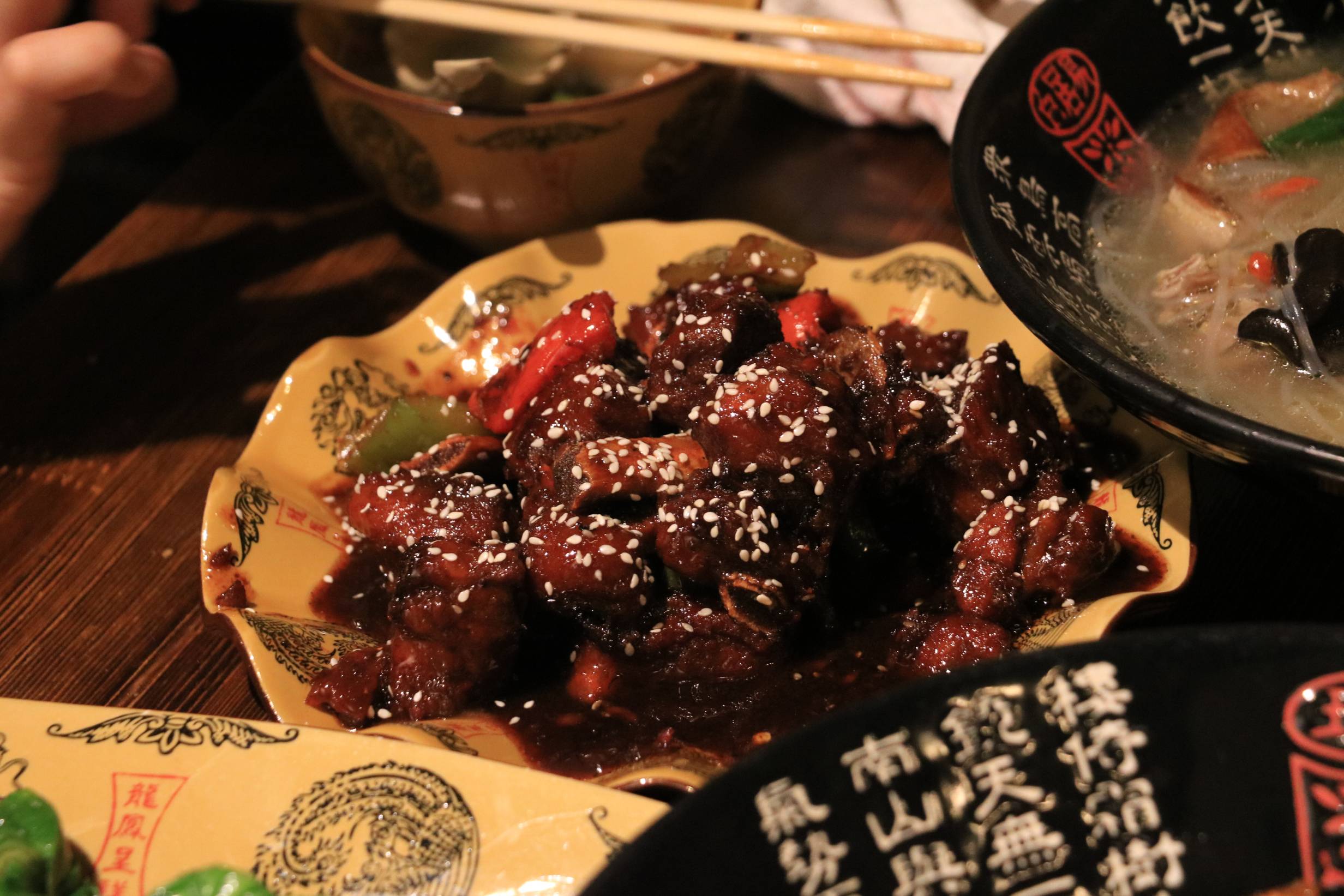
In addition to the duck soup, we also got the sweet and sour ribs ($17.99). An interesting one in the American-Chinese food scape, a ubiquitous dish with a straight-forward name and similar appearances everywhere, yet in its native country the regional variations can be wild. On Shiquan’s Chinese menu this dish is called “Wuxi ribs,” although the outcome did not match up with my rib-eating memories in Wuxi in the slightest. Instead of miles of sweetness, Shiquan’s version had taken a definitive turn to amp up the savory (Wuxi ribs are also typically larger). To me it was as if the dish got “Hunanized” by the Hunanese chef, these darkly caramelized and deeply flavorful ribs, which we enjoyed with great appetite.
Given the small number of working hands and tables, be ready to wait if you’re coming here to dine at peak hours (Thursday-Monday dinner times; try going after 7 p.m.), and service can be slow. Shiquan also offers take out options and their own delivery services (at a $2.99 fee), a relief for homebodies and stay-in evenings.
Shiquan
212 E Green St #102,
Champaign
11 a.m. to 9 p.m., daily
Photos by Cara Feng








